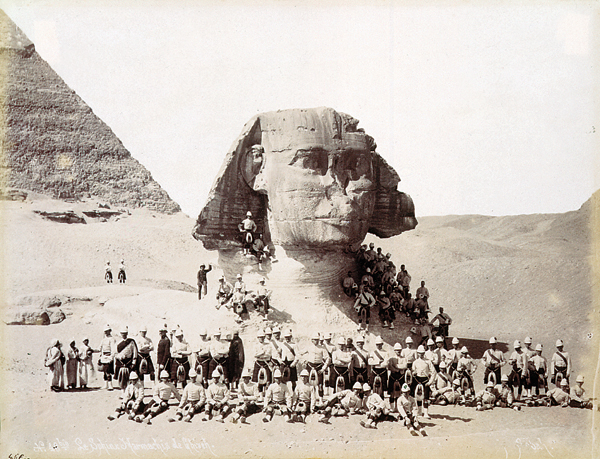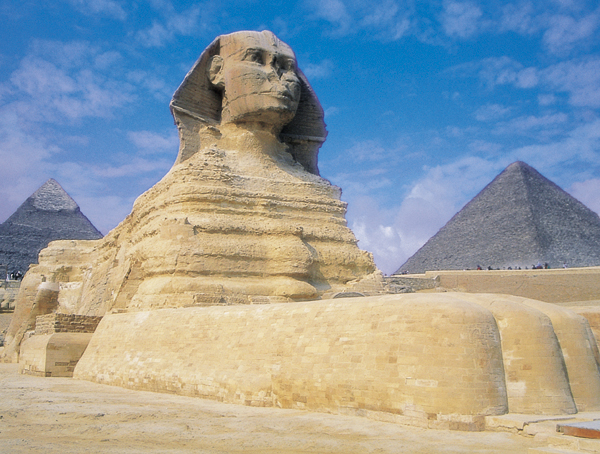Before and After 20th-Century Restorations

In December 1997, conservationists finally removed the scaffolding surrounding the Great Sphinx at Giza, completing the most recent round of repairs (see photo below, taken earier this year). Restoration work on the 65-foot-tall, 290-foot-long sculpture began in 1988 when a chunk of the great cat’s right shoulder broke off—creating such a furor over the future of Egypt’s most prominent symbol that the director of antiquities lost his job.

The Sphinx was built by Pharaoh Khafre of the Fourth Dynasty (c. 2613–2494 B.C.). Khafre’s workmen sculpted the colossal statue, which probably bears a likeness of the king’s own face, out of a stone mound left behind by quarrying during the reign of the earlier Fourth Dynasty pharaoh Khufu (also known as Cheops).
A millennium later, the Sphinx had problems. The first known repairs were made by Pharaoh Thutmose IV (1400–1390 B.C.), who left an engraved stone celebrating his reign between the lion’s paws. (It’s still there.) Further repairs were made by the rulers of Egypt’s 26th Dynasty (664–525 B.C.) and by the Romans, who, in the first and second centuries A.D., reinforced the Sphinx’s paws and sides by inserting small stones.
Already a library member? Log in here.
Institution user? Log in with your IP address.

